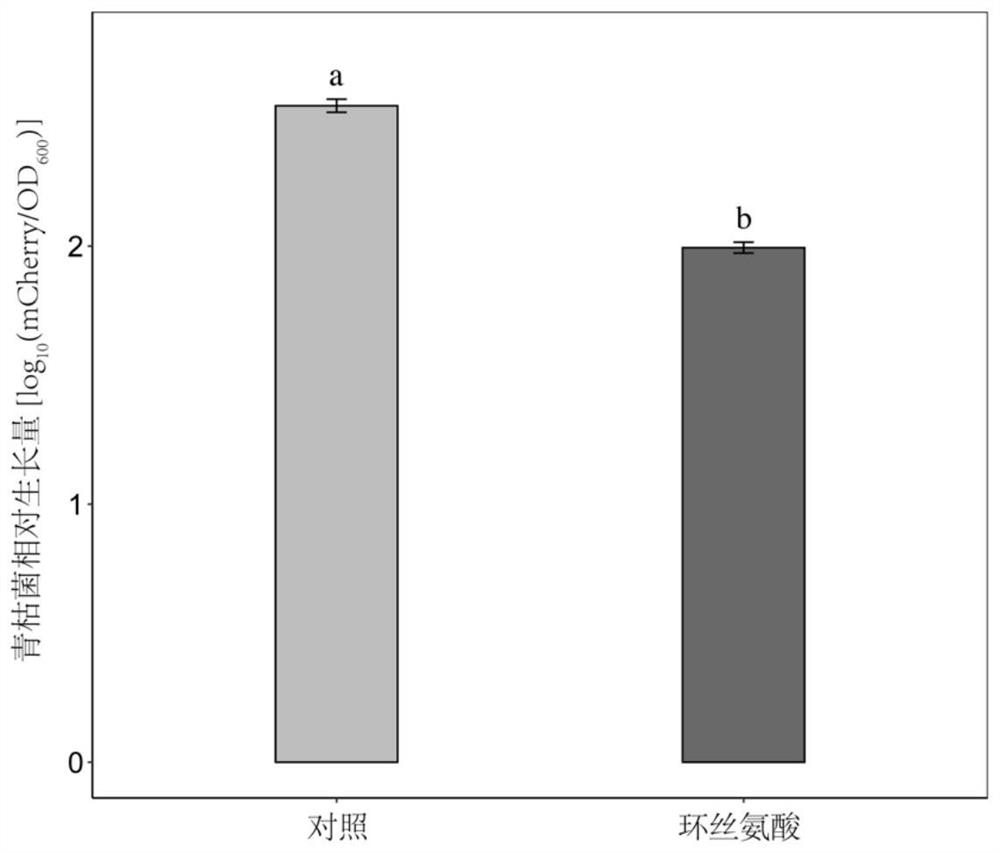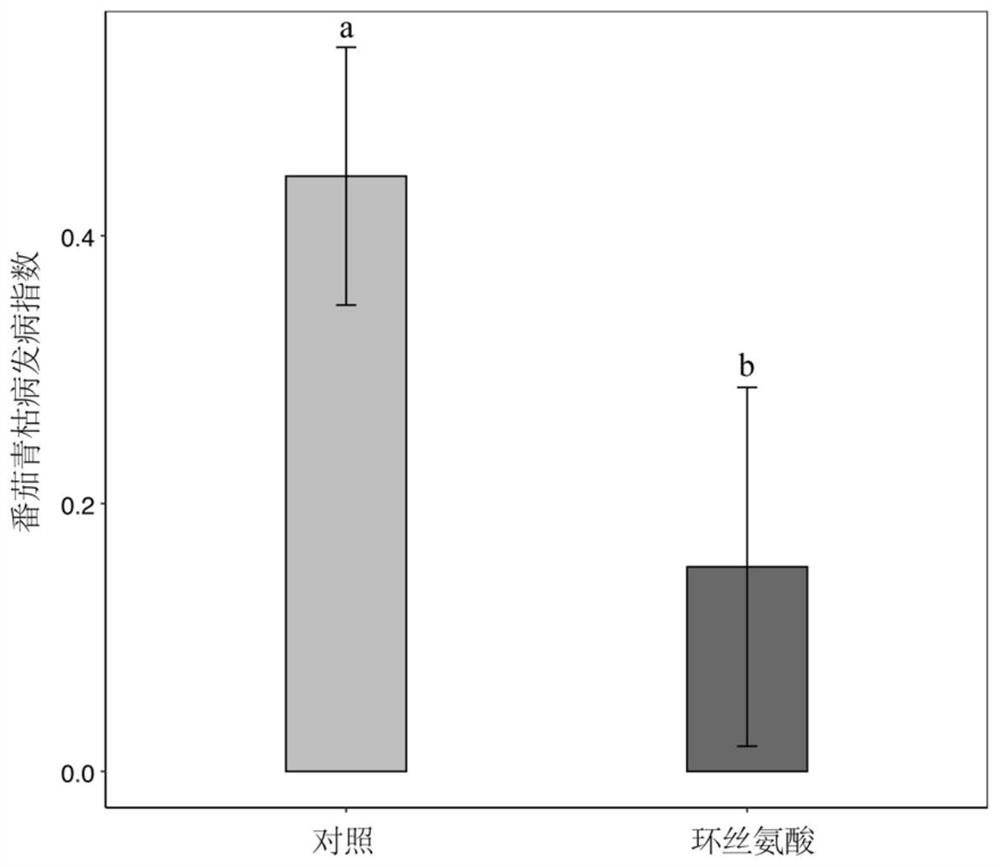A kind of application of cycloserine and beneficial bacteria to prevent and control soil-borne bacterial wilt of tomato
A technology of cycloserine and beneficial bacteria, applied in the field of microorganisms, can solve problems such as limited nutrients
- Summary
- Abstract
- Description
- Claims
- Application Information
AI Technical Summary
Problems solved by technology
Method used
Image
Examples
Embodiment 1
[0020] The Indoor Effect of Cycloserine on Promoting the Growth of Beneficial Bacteria
[0021] NA liquid medium: glucose 10g, peptone 5g, beef extract 3g, yeast extract 0.5g, deionized water 1000mL, adjust pH to 7.2-7.4, autoclave at 115°C for 30min.
[0022] NA solid medium is NA liquid medium plus 2-3% (w / w) agar.
[0023] The bacterial strain NJQL-A6 is classified as Ralstonia peeteri, and the preservation number is CGMCC No.6628.
[0024] The NJQL-A6 preserved in glycerol was streaked on the NA solid medium, and cultured at 30°C for 2 days; a single colony on the plate was picked and transferred to the NA liquid medium, and cultured overnight at 30°C and 170rpm. Get the fresh bacterial liquid at 4500rpm, centrifuge at normal temperature for 5min, collect the bacterial cells, wash the bacterial cells with sterile normal saline (0.85% NaCl) for 3 times, remove the culture medium, adjust the concentration of the bacterial liquid with sterile normal saline to 1×10 8 CFU / mL,...
Embodiment 2
[0031] Cycloserine enhances the indoor effect of beneficial bacteria against soil-borne Ralstonia solanacearum
[0032] Material: Ralstonia solanacearum QL-Rs1115 isolated from Qilin Town, Nanjing [1] , its red fluorescent protein marker bacterial strain RS-RFP is the model invading pathogen of the present invention, and this bacterial strain is that the red fluorescent protein gene mCherry is transferred into R. solanacearum QL-Rs1115 through plasmid pYC12, can be in the NA of 30 μ g / mL gentamicin Media plate [2] Grow on it, named RS-RFP. Beneficial bacteria NJQL-A6 screened from Nanjing Qilin Town, can inhibit the growth of Ralstonia solanacearum QL-Rs1115.
[0033] Streak the beneficial bacteria NJQL-A6 preserved in glycerol on the NA solid medium, and place the plate in a 30°C incubator for 2 days until a single colony appears. Pick a single colony on the plate and transfer it to NA liquid medium, and culture overnight at 30°C and 170rpm. Get the fresh bacterial soluti...
Embodiment 3
[0040] Cycloserine enhances potted effect of beneficial bacteria against soil-borne Ralstonia solanacearum
[0041] The beneficial bacterium NJQL-A6 was inserted into the NA liquid medium, and shaken at 30°C and 170rpm for 48h. Get the fresh bacterial solution at 4500rpm, centrifuge at normal temperature for 5min, collect the bacterial cells, wash the bacterial cells for 3 times with sterile normal saline (0.85% NaCl), remove the culture medium, and finally adjust the concentration of the bacterial solution to 1×10 with sterile normal saline. 8 About CFU / mL, obtain the suspension of beneficial bacteria and set aside.
[0042] Ralstonia solanacearum QL-Rs1115 was inserted into NA liquid medium, and cultured with shaking at 30°C and 170rpm for 48h. Get the fresh bacterial solution and centrifuge at 4500rpm at normal temperature for 5min, collect the bacterial cells, wash the bacterial cells for 3 times with sterile normal saline (0.85% NaCl), remove the culture medium, and fina...
PUM
 Login to View More
Login to View More Abstract
Description
Claims
Application Information
 Login to View More
Login to View More - R&D
- Intellectual Property
- Life Sciences
- Materials
- Tech Scout
- Unparalleled Data Quality
- Higher Quality Content
- 60% Fewer Hallucinations
Browse by: Latest US Patents, China's latest patents, Technical Efficacy Thesaurus, Application Domain, Technology Topic, Popular Technical Reports.
© 2025 PatSnap. All rights reserved.Legal|Privacy policy|Modern Slavery Act Transparency Statement|Sitemap|About US| Contact US: help@patsnap.com



